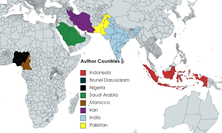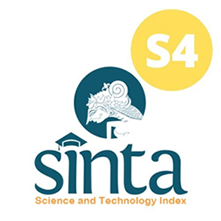Diagnostic Accuracy of Ultrasonography Using U Classification of Thyroid Nodules in Detection of Malignant Thyroid
Abstract
Ultrasonography (US) helps diagnose malignant thyroid nodules based on various characteristics, including echogenicity, margins, microcalcifications, size, form, and aberrant neck lymph nodes. The study aimed to determine the diagnostic accuracy of ultrasonography for cancer diagnosis in thyroid nodules, using Histopathology as the gold standard. To minimize morbidity and death from the condition and the number of solely invasive procedures biopsies, the results of our research will give patients and physicians with a noninvasive, cost-effective, and conveniently accessible diagnostic technique for differentiating cancerous from benign nodules. A cross-sectional analytical study was designed to collect data prospectively from July 2022 to October 2022 in the Department of Radiology at Nuclear Medicine, Oncology and Radiotherapy Institute Islamabad. Patients in the age range of 18-60 years, both genders were enrolled. Th data was entered into SPSS 24. The frequencies and percentages of categorical factors such as sex and malignancy in thyroid nodules were determined using descriptive analysis. For numerical variables such as age, the mean and standard deviation were computed. We evaluated the sensitivity, specificity, PPV, and NPV with a 95% confidence interval for the U-classification of malignant thyroid nodules and represented as Two by Two tables. In addition, Histopathology was used to evaluate U's efficacy as a diagnostic tool for finding malignant thyroid nodules. The study sample comprised 34 (68%) female and 16 (32%) male patients. On Biopsy, cancerous nodules were diagnosed in only 19 (38.5%) patients, and the remaining 31 (62%) had benign lesions. The prevalence of thyroid malignancy in our sample was 38%. On ultrasonography, malignancy was diagnosed in 15(30%) lesions, while the remaining 35(70%) patients were diagnosed with benign lesions. Histopathology confirmed malignant thyroid nodules in 15 (true positive) cases, whereas 6 (false positive) had no malignant lesion on Histopathology. In US negative patients, 27 were true negative, while 2 were false negative. The sensitivity of ultrasound U-score in diagnosing malignant thyroid nodules was 88.2%, specificity was 81.8%, PPV was 71.4%, and NPV was 93% Diagnostic accuracy is high when the US is used to detect thyroid problems, making it the preferred noninvasive technique. We recommend that thyroid lesions be routinely assessed clinically, imaged radiographically, and analyzed histo-pathologically. U Classification system for identifying potentially cancerous thyroid nodules is a valuable tool. It allows for a more prudent choice of nodules to undergo FNAC, reducing the number of needless procedures.

This work is licensed under a Creative Commons Attribution-ShareAlike 4.0 International License.
Authors who publish with this journal agree to the following terms:
- Authors retain copyright and grant the journal right of first publication with the work simultaneously licensed under a Creative Commons Attribution License that allows others to share the work with an acknowledgement of the work's authorship and initial publication in this journal.
- Authors are able to enter into separate, additional contractual arrangements for the non-exclusive distribution of the journal's published version of the work (e.g., post it to an institutional repository or publish it in a book), with an acknowledgement of its initial publication in this journal.
- Authors are permitted and encouraged to post their work online (e.g., in institutional repositories or on their website) prior to and during the submission process, as it can lead to productive exchanges, as well as earlier and greater citation of published work (See The Effect of Open Access).











